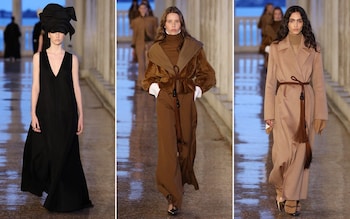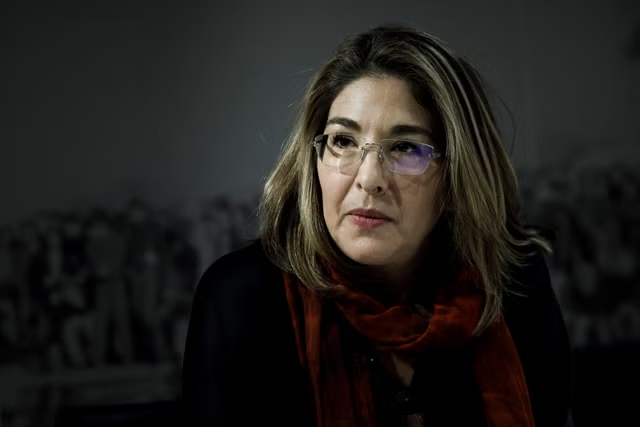TOKYO (AP) — Japanese architect Fumihiko Maki, who won the prestigious Pritzker Prize for designs praised as smartly and artfully fusing the East with the West, has died. He was 95.
Maki, who taught architecture and urban design at Harvard, died June 6, his office, Maki & Associates, said Wednesday. Japanese media reports attributed the cause of death to old age. The office declined to confirm the reports.
The National Museum of Modern Art in Kyoto is considered one of his classic designs, with floating forms of glass, metal and concrete. Its gray exterior appears simple at first glance but sets off patterns of reflected light on rough and polished marble.
In the U.S., Maki’s projects included the Yerba Buena Center for the Arts in San Francisco and 4 World Trade Center in New York. He also did the Makuhari Messe exhibition hall in Chiba, Japan, and the Hillside Terrace Complex in Tokyo.
Maki in the 1980s designed Tokyo’s Spiral building, whose management mourned his death and thanked him for “the beautiful slopes and the rich space that envisioned an urban park.”
In 2013, Maki complained about the then planned spaceship-like design of the 2020 Tokyo Olympics stadium, slamming it as too expensive and clashing with its surroundings. He said he had the support 100 other people, including architects, in opposing the size of the proposed design by British-Iraqi architect Zaha Hadi.
“The problems I see with the planned stadium all relate to the issue of scale,” he said.
That design was eventually ditched for a more modest-looking design by Kengo Kuma which used pieces of wood for a natural Japanese look.
Born in Tokyo in 1928, Maki was educated at the University of Tokyo, the Cranbrook Academy of Art in Michigan and Harvard University Graduate School of Design.
Before opening his own design firm in 1965 in Tokyo, he worked in various offices including Skidmore Owings and Merrill, or SOM, based in Chicago, and Sert, Jackson & Associates in Cambridge, as well as the campus planning office of Washington University in St. Louis.
A devoted educator, Maki, in addition to teaching at Washington University, Harvard and the University of Tokyo, lectured around the world. His essays were published in a collection called “Nurturing Dreams” by MIT Press in 2008. In it, he explored the Japanese sense of space called “oku,” which Maki described as “the core of this high-density space organized into multiple layers like an onion.”
Utilizing oku allowed the Japanese to deliver a feeling of depth even in a cramped area, according to this theory.
“In the formation of urban space, certain stable concepts that have been sifted and committed to memory by the collective unconscious of the community work automatically,” Maki wrote.
“Oku, a spatial concept peculiar to Japan, is a good example, and I believe an understanding of this way of perceiving space is important in formulating ideas of what future cities should be like.”
Maki was the second Japanese to win the Pritzker, hailed as the Nobel Prize of architecture, after Kenzo Tange, his mentor. Maki, along with fellow Tange students Arata Isozaki and Kisho Kurokawa, were the pillars of Japanese modernism.
The Pritzker, in selecting Maki, praised him as part of a new wave of architects rebuilding postwar Japan.
“He uses light in a masterful way making it as tangible a part of every design as are the walls and roof. In each building, he searches for a way to make transparency, translucency and opacity exist in total harmony. He uses detail to give his structures rhythm and scale,” Bill Lacy, a member of the international panel of jurors that selected Maki, said at the time.
Maki was honored with other awards, such as the Wolf Prize from Israel in 1988 and the Arnold Brunner Prize from the American Academy of Arts and Letters in 1999. In 2011, the American Institute of Architects honored Maki with its highest accolade, the AIA Gold Medal.
Japanese media reports said a memorial service was planned. His office declined to give details, saying an official announcement was being prepared.
___
Yuri Kageyama is on X: https://twitter.com/yurikageyama
Kageyama covers Japan news for The Associated Press. Her topics include social issues, the environment, businesses, entertainment and technology.Disclaimer: The copyright of this article belongs to the original author. Reposting this article is solely for the purpose of information dissemination and does not constitute any investment advice. If there is any infringement, please contact us immediately. We will make corrections or deletions as necessary. Thank you.



